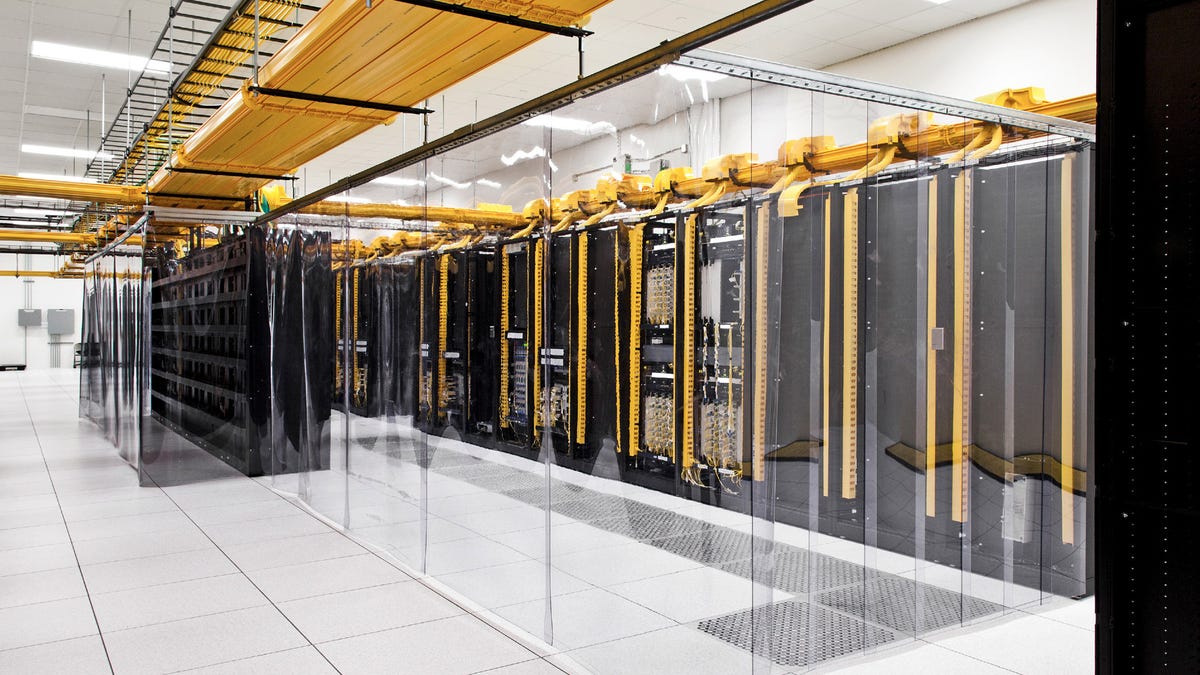Google designing its own server chips? Well, maybe
A source tells Bloomberg that Google is "considering" designing its own ARM-based server chips. It's possible, but Intel need not panic just yet.

Google is considering making its own server chips, Bloomberg reported Thursday. It's possible, but take the story with some grains of salt.
The idea would be to make server chips based on ARM Holdings' designs, the report said, citing one person familiar with the matter and raising the possibility that server chip giant Intel could be hurt by the move.
I've watched the server market and Google for years, and I'll agree it's possible. Google builds its own servers -- thousands and thousands of them -- as well as its software. Extending farther down into the hardware innards is conceivable, and ARM is hungry for the server market, so it's a sensible partner. Bloomberg extracted a noncommittal comment from Google that the company is trying to design "the world's best infrastructure," including "both hardware design (at all levels) and software design."
Google already has chip design expertise in house -- for example, Luis Andre Barroso, who pioneered work on multicore chips when he worked at Digital Equipment Corp. back in the day. Barroso has written about a computing approach he calls FAWN -- a fast array of wimpy nodes -- which would be well-suited to the relatively anemic ARM processors.
But even if it's true that Google wants to design ARM server chips, I'm not sure Intel need panic here.
First, it's not clear Google would fare better than the existing companies that have tried to push ARM chips into the server market. ARM servers, whose big selling point is low power consumption, are useful for generally low-stress server tasks. But Intel generally has been as successful at keeping ARM out of the server market as ARM chipmakers have been in keeping Intel out of the mobile market, and Intel shows no signs of letting its attention wander.
Second, designing chips is not an ambition to take on lightly. Manufacturing them economically at high volume is expensive, and the more your chips deviate from mainstream designs, the harder the job gets. Apple has built a respectable design team for its chips in the mobile market in recent years, but those ship by the tens of millions already. Even if Google made a couple of million chips a year, that's a lot less than Intel's server chip business with many server-maker customers. Intel is the king of manufacturing, too, and Google cares profoundly about making its computing infrastructure as economically efficient as possible.
Third, Google has a big, complicated computing infrastructure. ARM chips could fit in for some workloads, but it's likely higher-performance chips would be needed in abundance elsewhere. Maybe ARM chips will grow up to fit that role someday, but we're not there yet, and Intel isn't standing still.
Fourth, making chips is a hard way to get ahead. The newer ARMv8 designs open the door for better performance and 64-bit memory addressing that's essential for servers. But would Google be able to design a server chip that's head and shoulders above those it can simply buy? And would it truly get that much more control over its own infrastructure by using its own designs? Google could create designs perfectly optimized for its needs, but it would still need to partner with a chip manufacturer like Samsung or TSMC to actually build anything. Thus, like Apple, its control would only go so far.
More likely, Google is playing a long game. It's dickering with a quantum computer, for goodness sakes, which is about as far out as you can get these days with real hardware. If any company is evaluating the possibilities of in-house server chip design, it's Google. Intel doesn't go in for licensing its chip designs, but that's ARM Holdings' bread and butter, so it's a natural partner. But there's often a big gap between "considering" and "doing."
Next year, building servers with Google-designed ARM chips wouldn't make much sense. Ten years from now, though, you can bet computing infrastructure will look different, and you can bet that Google will be pushing it as hard as it can.

